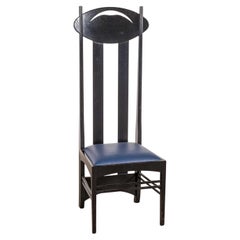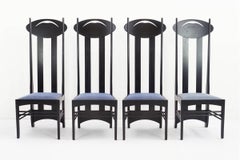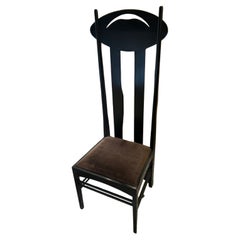Cassina Rennie Argyle
Vintage 1980s Italian Arts and Crafts Chairs
Ash, Ebony
Recent Sales
Antique 1890s Italian Arts and Crafts Chairs
Upholstery, Ash
Vintage 1930s Italian Bauhaus Chairs
Beech
1990s Italian Art Nouveau Chairs
Wood
Vintage 1970s Arts and Crafts Side Chairs
Bouclé, Hardwood
Vintage 1970s Italian Art Nouveau Dining Room Chairs
Silk, Ash
Vintage 1970s Italian Chairs
Wood
People Also Browsed
Mid-20th Century Austrian Vienna Secession Chairs
Leather, Faux Leather, Beech
21st Century and Contemporary American Scandinavian Modern Wall Lights a...
Brass, Nickel
Vintage 1970s Italian Post-Modern Beds and Bed Frames
Steel, Chrome
2010s South African Minimalist Night Stands
Burl, Poplar
2010s Austrian Chairs
Leather, Fabric
Late 20th Century Italian Arts and Crafts Dining Room Sets
Rush, Wood
Early 20th Century Vienna Secession Chairs
Vintage 1970s Italian De Stijl Chairs
Wood
21st Century and Contemporary French Mid-Century Modern Sofas
Stainless Steel
Vintage 1910s Austrian Vienna Secession Armchairs
Straw, Bentwood
Vintage 1970s American Industrial Chairs
Stainless Steel
Charles Rennie Mackintosh for sale on 1stDibs
At the turn of the 20th century, the Scottish architect Charles Rennie Mackintosh created a singular, wholly original design style that was both lyrical and sleekly modern. Within his architectural schemes for schools, private homes and restaurants, Mackintosh — frequently working in collaboration with his wife, the artist Margaret Macdonald — invented an aesthetic that blends the organic flow of the Art Nouveau style and the honest simplicity of the English Arts & Crafts movement.
Mackintosh was born into a working-class Glasgow family, the fourth of the 11 children of a police clerk and his wife. At age 15, Mackintosh began to take night classes at the Glasgow School of Art — where he would study until 1894 — and the following year started an apprenticeship with local architect John Hutchison.
At the GSA, Mackintosh befriended Macdonald, her sister, Frances, and fellow architecture student Herbert McNair. Together they formed a graphic design team known as the Four, and were admired for their illustrations featuring sinuous botanical forms and sylph-like women. Around the same time, Mackintosh was hired by the architectural firm Honeyman and Keppie. where he drafted the company’s winning design for a new GSA building. The structure, with its brooding, asymmetrical facade punctuated by soaring studio windows, would be his architectural masterwork. By 1900, Mackintosh was designing houses and began the interiors for a group of Glasgow tea parlors in which he and Macdonald would produce some of the most alluring, lushly graphic decors of the era. Mackintosh’s work became widely influential on the continent, particularly among Josef Hoffmann, Koloman Moser and other members of the Vienna Secession movement.
His work on private homes and tearooms generated the furniture designs for which Mackintosh is best known today. These include the Hill House chair, with its latticed back; the Argyle Street Tea Room chair, which features an oval head rail with a cutout that resembles a bird in flight; and several others — all instantly recognizable for their stunning tall backs.
Mackintosh’s furniture works well in both traditional and modern interiors, though by virtue of both its familiarity and striking lines it tends to stand out. Because he was much more esteemed in Europe than in Britain, relatively few antique Mackintosh works survive, and those that have are museum pieces. Recently produced examples of his designs are widely available — notably, the Italian firm Cassina has been making fine Mackintosh pieces since the early 1970s. As you will see on 1stDibs, the furniture of Charles Rennie Mackintosh is ever intriguing and engaging. His work is a historical touchstone that would be welcome in the home of any modern design aficionado.
Finding the Right Seating for You
With entire areas of our homes reserved for “sitting rooms,” the value of quality antique and vintage seating cannot be overstated.
Fortunately, the design of side chairs, armchairs and other lounge furniture — since what were, quite literally, the early perches of our ancestors — has evolved considerably.
Among the earliest standard seating furniture were stools. Egyptian stools, for example, designed for one person with no seat back, were x-shaped and typically folded to be tucked away. These rudimentary chairs informed the design of Greek and Roman stools, all of which were a long way from Sori Yanagi's Butterfly stool or Alvar Aalto's Stool 60. In the 18th century and earlier, seats with backs and armrests were largely reserved for high nobility.
The seating of today is more inclusive but the style and placement of chairs can still make a statement. Antique desk chairs and armchairs designed in the style of Louis XV, which eventually included painted furniture and were often made of rare woods, feature prominently curved legs as well as Chinese themes and varied ornaments. Much like the thrones of fairy tales and the regency, elegant lounges crafted in the Louis XV style convey wealth and prestige. In the kitchen, the dining chair placed at the head of the table is typically reserved for the head of the household or a revered guest.
Of course, with luxurious vintage or antique furnishings, every chair can seem like the best seat in the house. Whether your preference is stretching out on a plush sofa, such as the Serpentine, designed by Vladimir Kagan, or cozying up in a vintage wingback chair, there is likely to be a comfy classic or contemporary gem for you on 1stDibs.
With respect to the latest obsessions in design, cane seating has been cropping up everywhere, from sleek armchairs to lounge chairs, while bouclé fabric, a staple of modern furniture design, can be seen in mid-century modern, Scandinavian modern and Hollywood Regency furniture styles.
Admirers of the sophisticated craftsmanship and dark woods frequently associated with mid-century modern seating can find timeless furnishings in our expansive collection of lounge chairs, dining chairs and other items — whether they’re vintage editions or alluring official reproductions of iconic designs from the likes of Hans Wegner or from Charles and Ray Eames. Shop our inventory of Egg chairs, designed in 1958 by Arne Jacobsen, the Florence Knoll lounge chair and more.
No matter your style, the collection of unique chairs, sofas and other seating on 1stDibs is surely worthy of a standing ovation.


